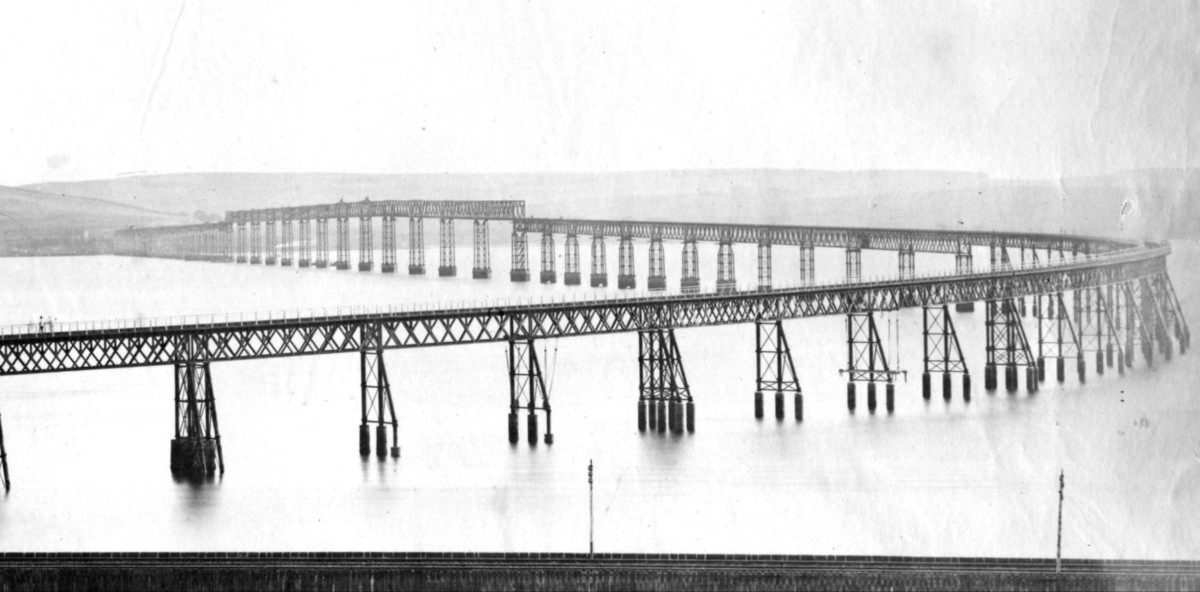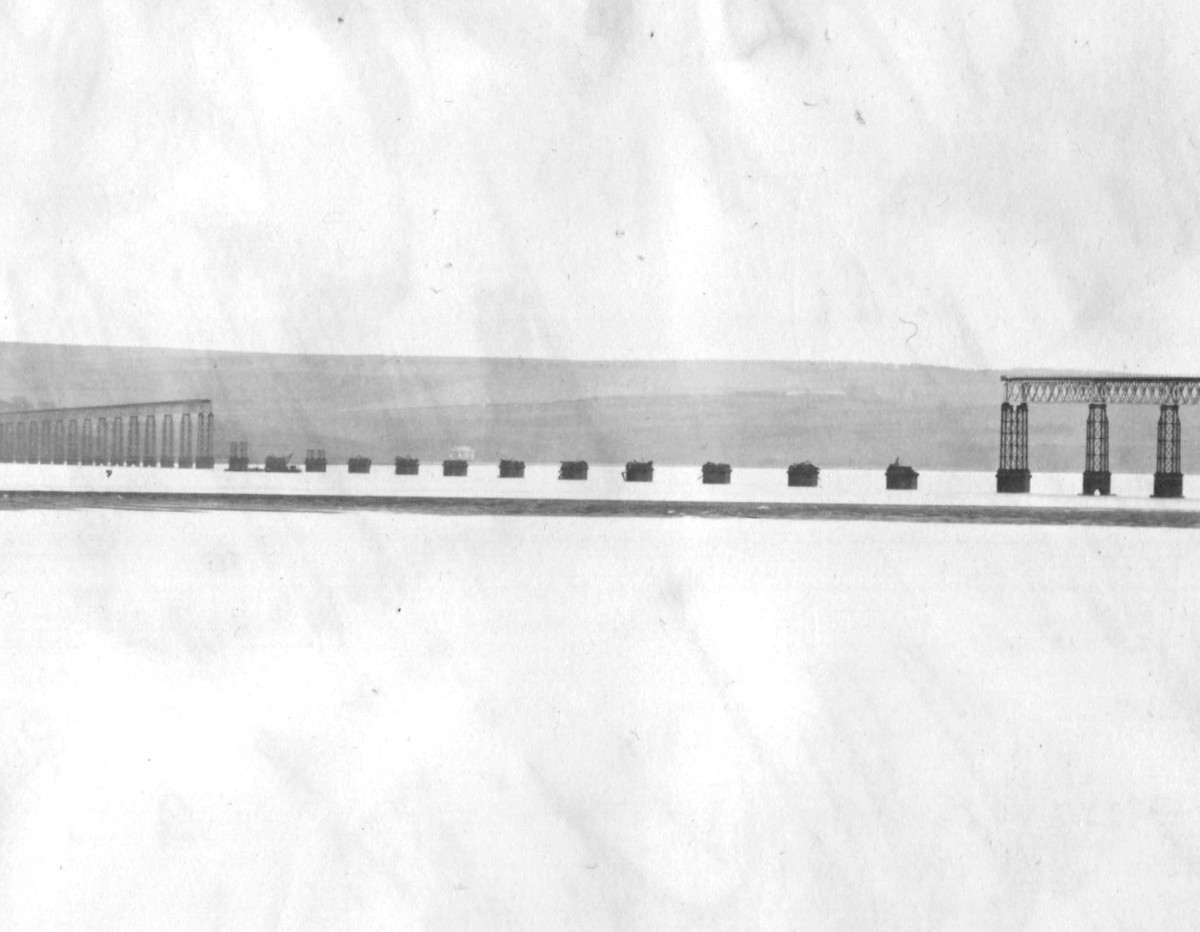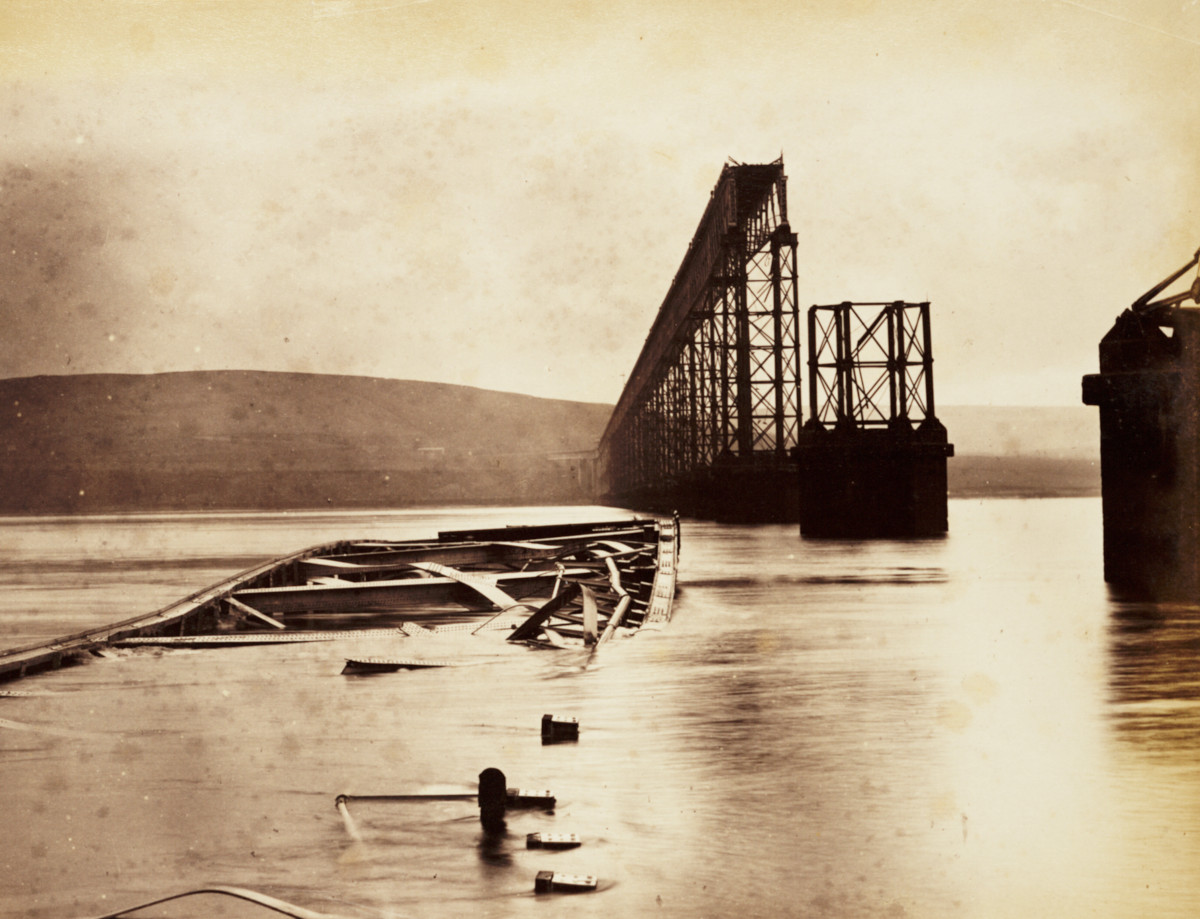| Re: On this day - 28th December - 1879 - Tay Bridge disaster Posted by stuving at 19:56, 28th December 2021 |     |
Future British bridge designs had to allow for wind loadings of up to 56 pounds per square foot (2.7 kilopascals). Bouch's design for the Forth Bridge was not used.
Pounds per square foot! What kind of units are they? at least it converted it into kPa. I have heard of psi (pounds per square inch) and someone suggested to me recently that a design should be done to an ASTM standard that used American customary units that included ksi (apparently 1 ksi = 1000 psi). I asked whether the proposed design method complied with Eurocodes and suggested that asking UK engineers, who are trained to design in proper units, to design to such illogical units might not be a a good idea.
They were the units in use at the time - for example in the report of the court of inquiry into the Tay Bridge disaster. This report was published in the Scotsman of 5th July 1880 - yes, in full, over a page and a bit. Those were the days ...
In fact there were two reports, as the chairman (Henry Rothery) disagreed on a couple of the conclusions. So he wrote his own, and the official report was written by the other two. Notably, Rothery (a lawyer) thought Bouch should be blamed while the two engineers shied away from doing that. Not that it made a lot of difference to Bouch, as he lived less than a year afterwards.
The reports concluded on the wind pressure question that it was poorly understood (certainly true) and no standard allowances were being used in this country. Rather surprisingly, the two engineers said the board of trade should set a required level, while Rothery said the engineering profession needed to decide on one first.
Other national standards of 50 or 55 pounds per square foot were noted. In the published text, where there a lot of references to such pressures, the units get shortened to just pounds or pounds per foot. The latter is I think not as odd as it looks, since a figure for a specific structural member may be worked out per unit length!
| Re: On this day - 28th December - 1879 - Tay Bridge disaster Posted by ellendune at 16:25, 28th December 2021 |     |
Future British bridge designs had to allow for wind loadings of up to 56 pounds per square foot (2.7 kilopascals). Bouch's design for the Forth Bridge was not used.
[/quote]Pounds per square foot! What kind of units are they? at least it converted it into kPa. I have heard of psi (pounds per square inch) and someone suggested to me recently that a design should be done to an ASTM standard that used American customary units that included ksi (apparently 1 ksi = 1000 psi). I asked whether the proposed design method complied with Eurocodes and suggested that asking UK engineers, who are trained to design in proper units, to design to such illogical units might not be a a good idea.
| On this day - 28th December - 1879 - Tay Bridge disaster Posted by grahame at 16:15, 28th December 2021 |     |
The Tay Bridge Disaster - from Wikipedia
The Tay Bridge disaster occurred during a violent storm on Sunday 28 December 1879, when the first Tay Rail Bridge collapsed as a train from Burntisland to Dundee passed over it, killing all aboard. The bridge—designed by Sir Thomas Bouch—used lattice girders supported by iron piers, with cast iron columns and wrought iron cross-bracing. The piers were narrower and their cross-bracing was less extensive and robust than on previous similar designs by Bouch.
Bouch had sought expert advice on wind loading when designing a proposed rail bridge over the Firth of Forth; as a result of that advice he had made no explicit allowance for wind loading in the design of the Tay Bridge. There were other flaws in detailed design, in maintenance, and in quality control of castings, all of which were, at least in part, Bouch's responsibility.
Bouch died less than a year after the disaster, his reputation ruined. Future British bridge designs had to allow for wind loadings of up to 56 pounds per square foot (2.7 kilopascals). Bouch's design for the Forth Bridge was not used.
Bouch had sought expert advice on wind loading when designing a proposed rail bridge over the Firth of Forth; as a result of that advice he had made no explicit allowance for wind loading in the design of the Tay Bridge. There were other flaws in detailed design, in maintenance, and in quality control of castings, all of which were, at least in part, Bouch's responsibility.
Bouch died less than a year after the disaster, his reputation ruined. Future British bridge designs had to allow for wind loadings of up to 56 pounds per square foot (2.7 kilopascals). Bouch's design for the Forth Bridge was not used.
Some public domain pictures:














